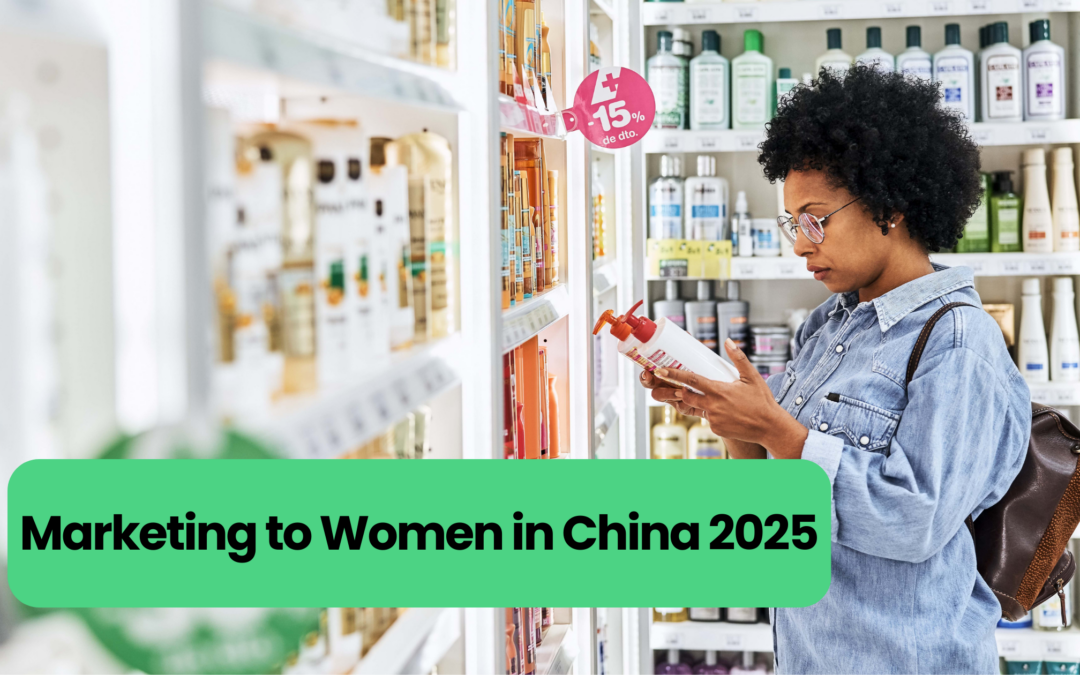Marketing to women in China in 2025 is being redefined in China as women emerge as the driving force behind the country’s consumer market growth. Data shows that by 2024, the She-Economy in China had already surpassed 10 trillion RMB, equivalent to the world’s seventh largest economy. Women are not only the primary consumers across categories such as medical aesthetics, travel, fashion, and beauty. They are also shaping aesthetic trends, brand culture, and commercial storytelling.
Against this backdrop, any brand seeking to succeed in marketing in China must rethink how it engages with female consumers. By 2025, effective marketing to women goes far beyond pink labels or slogan-driven gender appeals. Instead, success lies in approaching women with respect, inclusivity, and authenticity while truly addressing their real needs.
Redefining Beauty in Marketing in China
For a long time, mainstream beauty standards imposed narrow expectations on women. Fair skin, slim figures, youth, and refinement became the widely replicated formula for a successful woman. As women’s collective awareness grows, this homogenized image is increasingly questioned and often rejected by many consumers. Instead of passively conforming to these ideals, women are speaking out and asserting that every form of existence is valid. Beauty should not be dictated, nor should it exist to please others.
Brands that remain stuck in the old playbook of creating anxiety and selling solutions risk losing touch with the new generation of female consumers. In contrast, brands that respect women’s diversity and encourage them to embrace their authentic selves are building deeper emotional bonds and stronger brand loyalty. For example, SK-II’s 2025 International Women’s Day campaign, “Bare, I Dare,” featured women appearing without makeup, showcasing the reality of everyday life. By moving away from filters and retouching, the campaign resonated with consumers who value authenticity and natural expression.

Trends in Rational Spending
Not long ago, many brands relied on “for women” labels to justify higher prices. From pink packaged razors to girl-exclusive beverage bottles, these products created the illusion of being specially designed for women. Yet more and more female consumers are realizing that behind such gendered packaging lies not care but an unfair pricing strategy. A report from the University of California revealed that feminized products can carry a price premium of up to 27 percent. The effect is even more pronounced in economically advanced regions.
By 2025, as rational consumption becomes mainstream, this profit model based on gender labeling is losing its effectiveness. Research from Zhimeng Consulting shows that over 60 percent of women carefully read product reviews and ratings before making a purchase, and more than half evaluate practicality and necessity before buying.
For brands, winning trust in this new environment means delivering genuine value at the product level. For instance, skincare products that fail to demonstrate visible results will not earn loyalty, no matter how gentle or caring they are marketed to be. Similarly, sports gear that focuses on being pink and lightweight but lacks functionality is quickly abandoned by professional female consumers. Increasingly, women are turning to men’s functional products such as fishing sun protection wear or outdoor performance shoes. They are not concerned about whether the product is feminine but whether it is useful and effective.
An Expansion Project in China? We Can Help You!
“For Myself” Consumption: A New Driver of Marketing to Female Consumers in China
Modern women’s spending is no longer limited to material satisfaction. It is increasingly about emotional joy and personal fulfillment. This trend, often described as “for myself” consumption, reflects a shift where women place themselves at the center of decision-making. Rather than sacrificing or pleasing others, they are investing more in their physical health, mental well-being, and overall quality of life.
By 2025, this self-oriented consumption has taken on a more multidimensional form. On the health front, women’s attention to their physical condition continues to rise. Data shows that nearly 70 percent of women have increased their spending on wellness, ranging from fitness and nutritional supplements to sleep quality and emotional management. On the mental side, categories such as travel, reading, and therapeutic experiences are gaining significant traction.
Lululemon’s 2025 International Women’s Day campaign, “Live Vividly,” illustrates this shift perfectly. By telling the story of 78-year-old fitness enthusiast Joan MacDonald, the campaign delivered a powerful message: it is never too late to embrace life. Beyond inspiration, this narrative resonated deeply with women’s desire to live authentically and healthily. As a result, more consumers are willing to support brands that spark emotional resonance, whether it is a fragrance that brings comfort or gender-neutral fashion that conveys attitude. In this new landscape, emotional value has become a critical driver of competitiveness in marketing in China.
In 2025, Winning Women Means Winning Marketing in China
Female consumers today represent far more than a demographic label; they have become the driving force reshaping business logic. Instead of accepting passive marketing, they take an active role in shaping brand culture, influencing product trends, and redefining value expression. Standardized notions of beauty no longer resonate, as this audience demands proven product efficacy and seeks both authenticity and emotional connection. Ultimately, they embody a complex blend of rational decision-making and emotional depth.
To truly win over women in China’s 2025 market, brands must shift their approach. Moving from one-way messaging to genuine resonance is essential. Rather than creating anxiety, they should focus on empowering lifestyles. Gender stereotypes need to be replaced with attention to individual care. Marketing to women in China should extend beyond tactical promotion. It should become a core philosophy embedded in brand strategy.
Want to win with women consumers in China? Connect with STAiiRS, experts in marketing in China, and let us help your brand stand out in the She-Economy and drive the next wave of growth.


Recent Comments